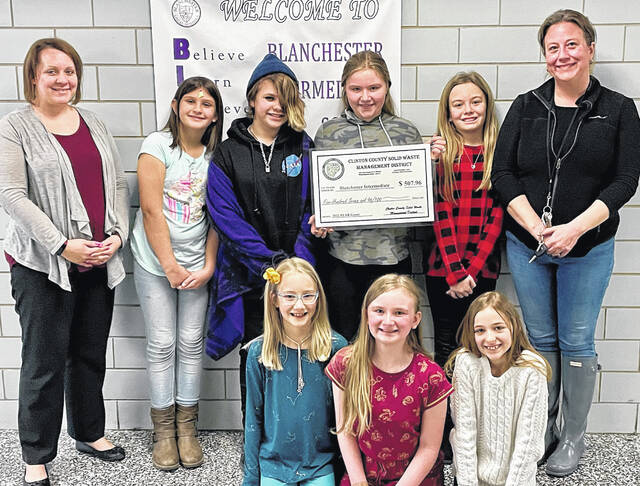In recent weeks, Clinton County Solid Waste Management District was busy awarding grants in Clinton County to local communities. But none of the grantees were as excited as Mrs. Adkins’ fourth-grade gifted students at Blanchester Intermediate School.
The students noticed that their school produced an astounding 30, 50-gallon trash bags each week at the beginning of the school year.
Students brainstormed ways to reduce waste and environmental impact. The first was to campaign their school to stop using disposable and non-recyclable Styrofoam lunch boxes and to instead use reusable lunch boxes.
The district was confident that they could make more.
Working with Clinton County Solid Waste Management District, Blanchester Local Schools re-imagined their waste management procedures and implemented a co-mingled recycling program through Rumpke — thus allowing the students to recycle their milk cartons among other frequently used items all while saving the district money.
Building on the positive momentum of these two environmentally and budget-friendly wins, Mrs. Adkins’ fourth-grade students were determined to institute a lasting composting program to reduce the volume of food waste being produced during their lunch period.
The students researched the available SWMD grant program options and created a compelling narrative along with a budget outlining how they would operate a meaningful composting project if they were granted grant funds.
The students, using the Solid Waste Management District’s PEAR (Promoting Environmental Awareness & Recycling) grant funds, will create an incredible program that will benefit the environment as well as their own class and classes yet to come.
SWMD is proud to have been able to fund the proposed project and make the program a reality.
Bravo, ladies! Now it’s time to roll up your sleeves and get to work!

From left: Cathrine Vaher and Bailey Mastin are front; and, back, Claire Paul, Scarlett Means and Josey Shelton; and, Erin Hartsock and Erin Hartsock.
